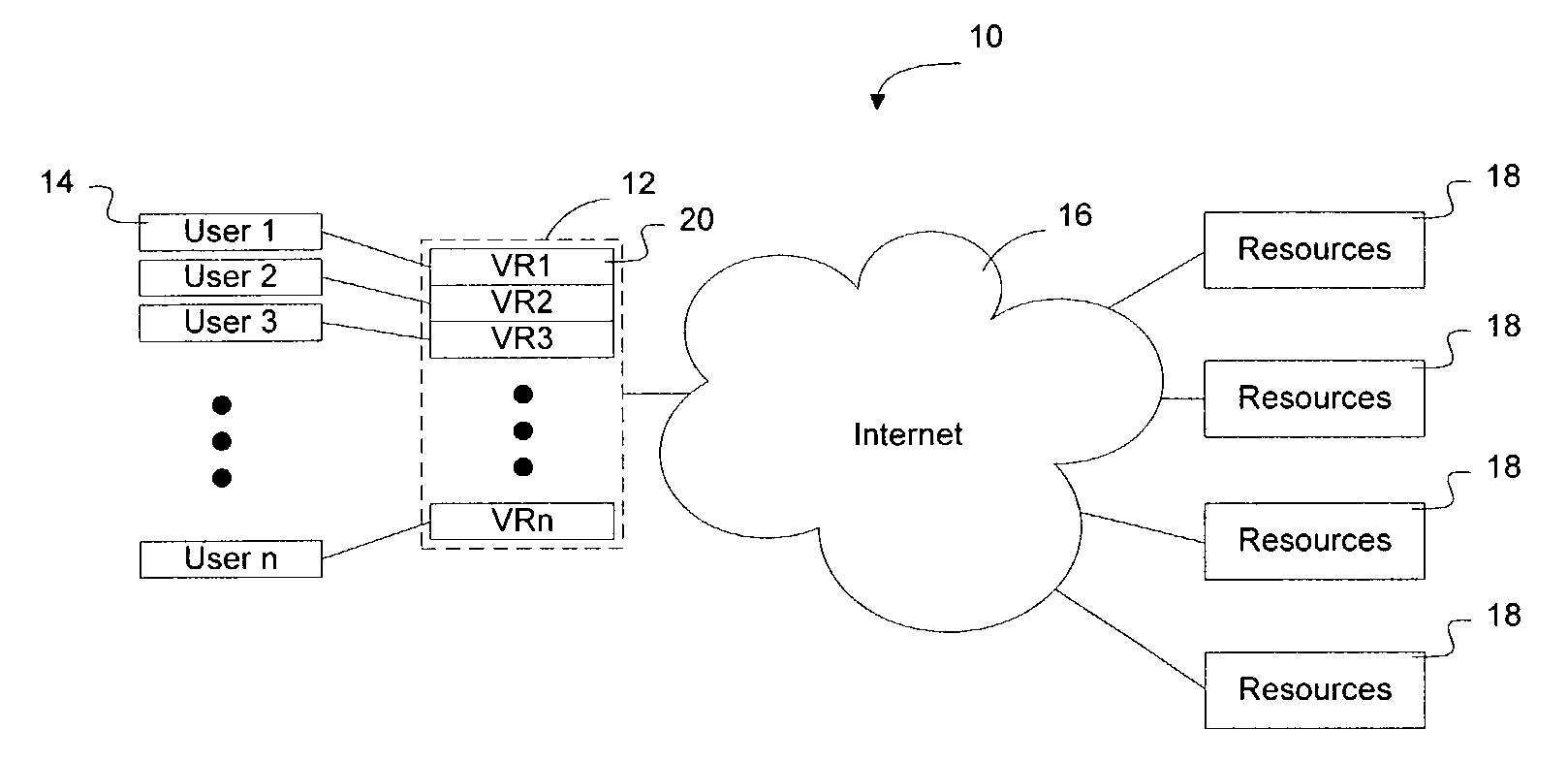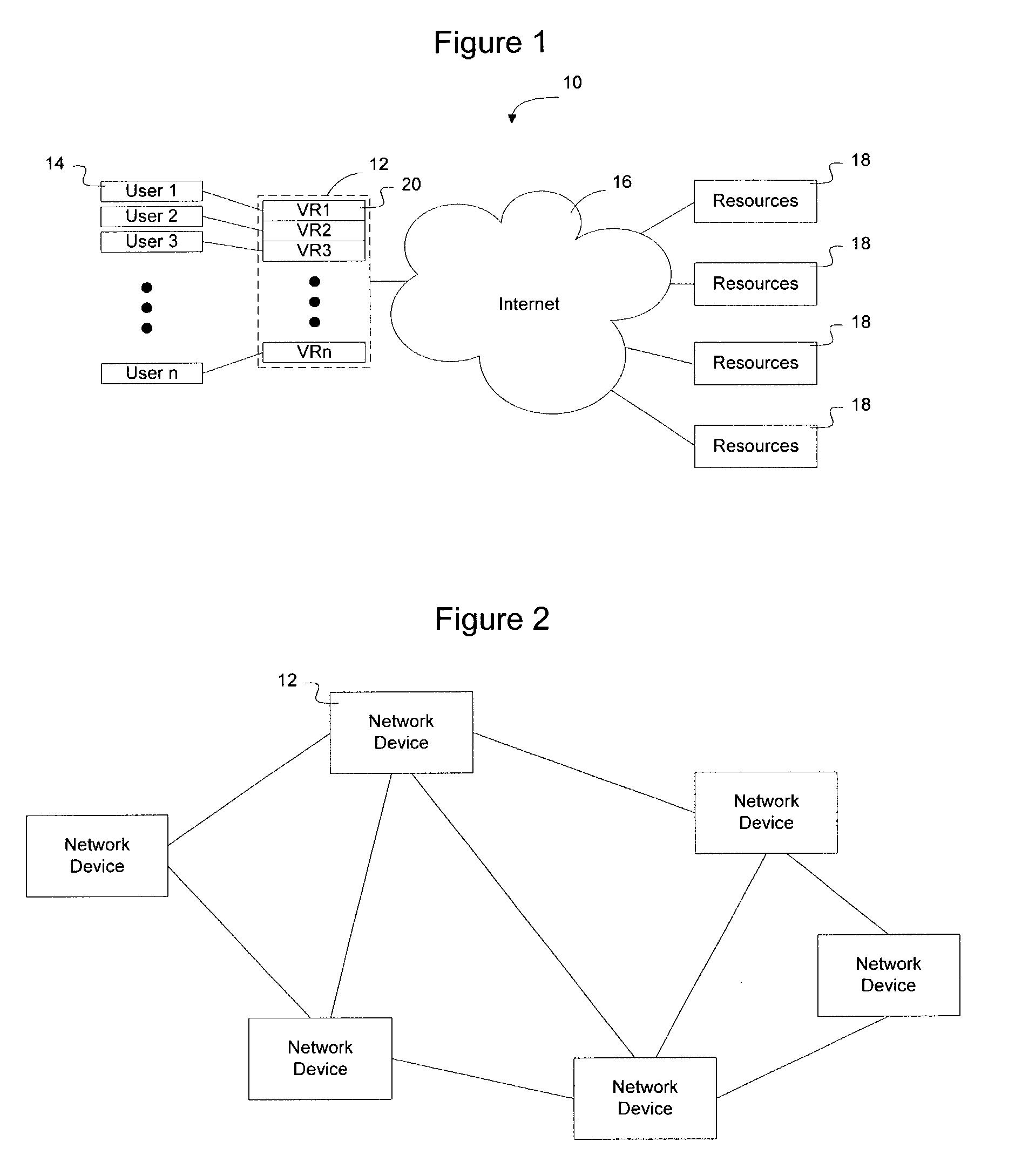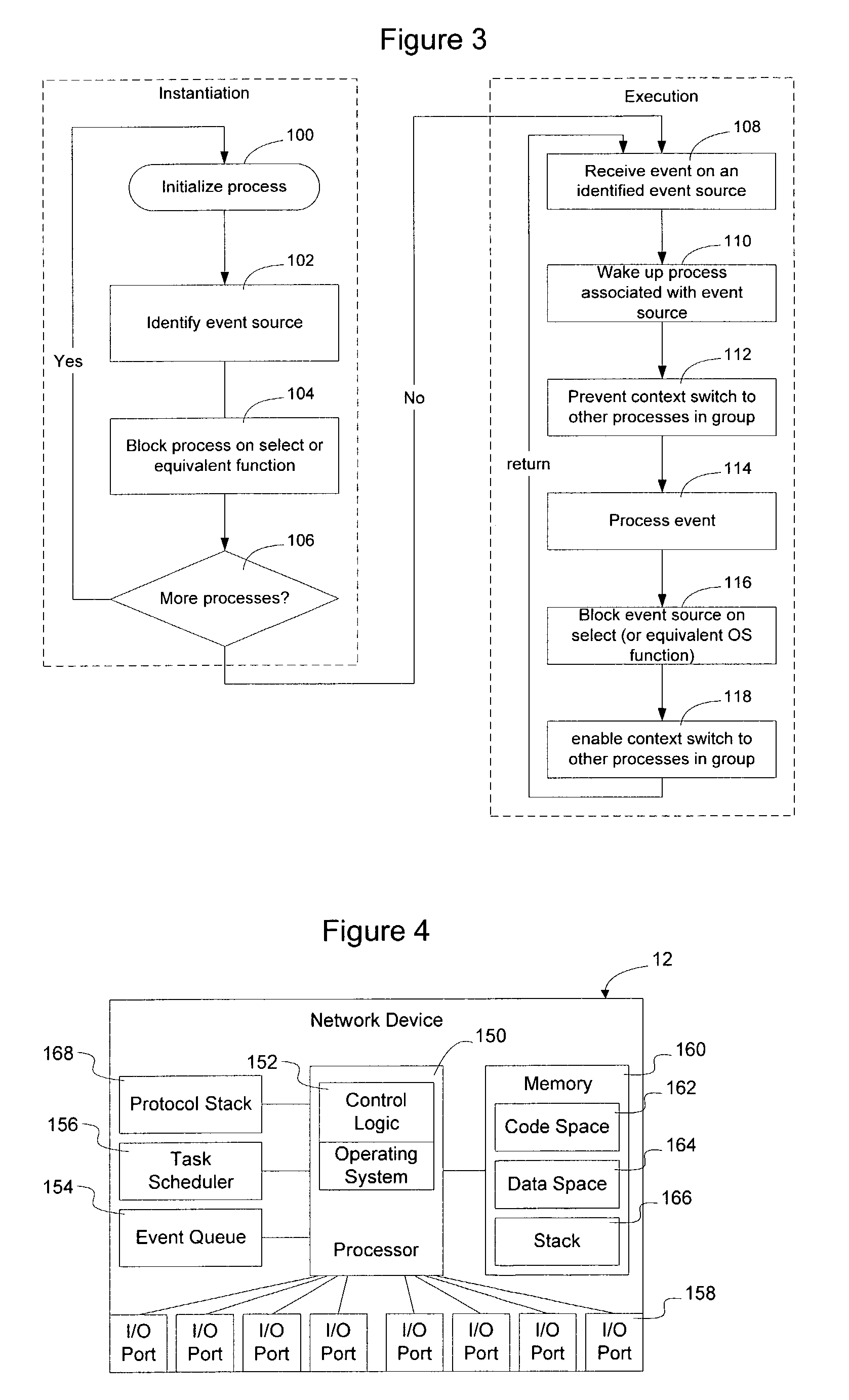Method and apparatus for sharing stack space between multiple processes in a network device
a network device and process technology, applied in the field of methods, can solve the problems of limiting the amount of physical memory required to accommodate the stack allocation of these processes may become excessive, and the availability of physical memory may start to limit the number of processes/threads that can be run on the network device, etc., to achieve the effect of reducing the stack requirements
- Summary
- Abstract
- Description
- Claims
- Application Information
AI Technical Summary
Benefits of technology
Problems solved by technology
Method used
Image
Examples
Embodiment Construction
[0023]The following detailed description sets forth numerous specific details to provide a thorough understanding of the invention. However, those skilled in the art will appreciate that the invention may be practiced without these specific details. In other instances, well-known methods, procedures, components, protocols, algorithms, and circuits have not been described in detail so as not to obscure the invention.
[0024]According to one embodiment of the invention, groups of network processes running on the network device are configured to share stack space by causing the operating system to block other network processes in a group from executing while one of the group processes is using the shared stack. By preventing a context switch to other processes, the network process may select a place during execution where it has relatively low stack requirements. Accordingly, although the process may require a large stack during execution, such as during execution of an event loop, upon ...
PUM
 Login to View More
Login to View More Abstract
Description
Claims
Application Information
 Login to View More
Login to View More - R&D
- Intellectual Property
- Life Sciences
- Materials
- Tech Scout
- Unparalleled Data Quality
- Higher Quality Content
- 60% Fewer Hallucinations
Browse by: Latest US Patents, China's latest patents, Technical Efficacy Thesaurus, Application Domain, Technology Topic, Popular Technical Reports.
© 2025 PatSnap. All rights reserved.Legal|Privacy policy|Modern Slavery Act Transparency Statement|Sitemap|About US| Contact US: help@patsnap.com



